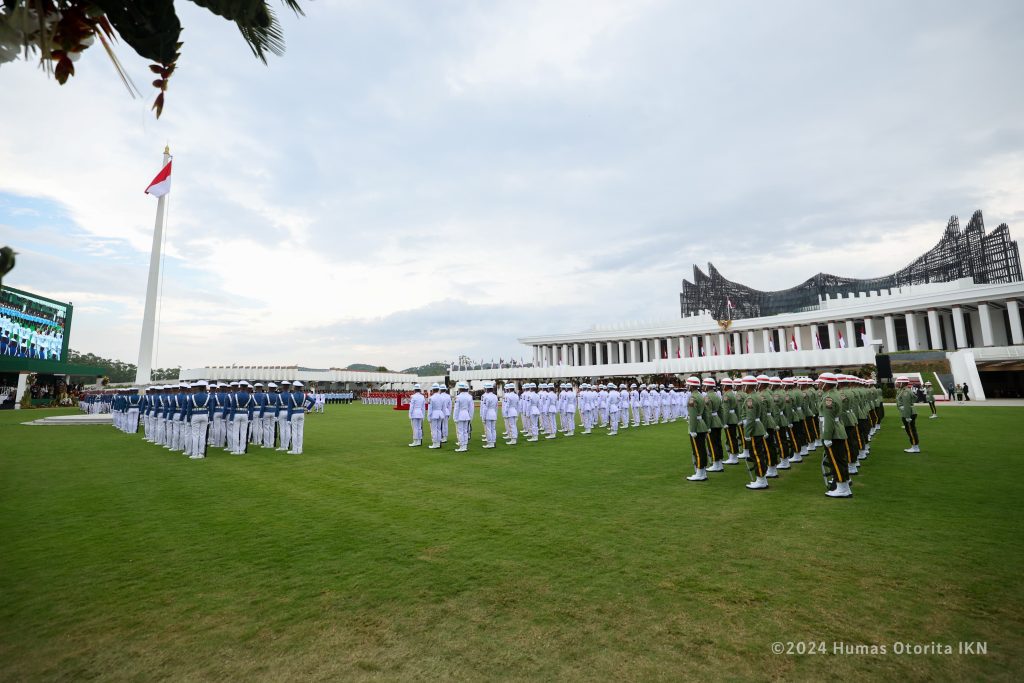On August 17, 2024, Indonesia officially inaugurated Nusantara as its new capital city, marking a historic moment in the nation’s development and governance. The move from Jakarta, the current capital, represents Indonesia’s bold vision to decentralize, modernize, and address significant challenges associated with the overpopulated and sinking metropolis of Jakarta.

Why Move the Capital?
Jakarta, located on the island of Java, has long been burdened with issues such as overcrowding, traffic congestion, air pollution, and flooding. The city is also sinking at an alarming rate, with sea levels rising due to climate change and excessive groundwater extraction. With over 10 million residents, Jakarta struggles to manage these compounding problems, which led the Indonesian government to search for an alternative solution.
In 2019, President Joko Widodo (Jokowi) announced plans to relocate the capital to East Kalimantan on the island of Borneo, citing the need for equitable development and a more sustainable urban environment. This decision aims to reduce the burden on Java, home to more than half of Indonesia’s population, and spur growth in other regions of the archipelago.
The Vision Behind Nusantara

The name Nusantara itself, which means “archipelago” in Old Javanese, reflects Indonesia’s diverse geography and heritage. The new capital city is located in the North Penajam Paser and Kutai Kartanegara regions of East Kalimantan, a province rich in natural resources and home to vast rainforests.
Nusantara is designed as a “smart and sustainable city,” integrating green technologies, renewable energy sources, and cutting-edge infrastructure. The Indonesian government has committed to ensuring that 70% of the city’s area will remain green, with strict measures to protect the environment and local wildlife. This is crucial in preserving the biodiversity of Borneo, a region known for its rainforests and endangered species such as orangutans and sun bears.
Key Features of the New Capital
- Green Urban Design: Nusantara’s master plan incorporates green spaces, sustainable buildings, and low-carbon transportation systems, such as electric vehicles and public transit. The city is expected to lead by example in promoting eco-friendly living.
- Disaster Resilience: Unlike Jakarta, which faces constant threats from flooding and land subsidence, Nusantara is strategically located in an area that is less prone to natural disasters like earthquakes and tsunamis. This makes it a safer long-term option for governance and administration.
- Economic Diversification: The development of Nusantara is seen as an opportunity to diversify Indonesia’s economy. While Jakarta is the economic heart of the country, Nusantara is envisioned to promote industries like renewable energy, tourism, and education, especially given its proximity to Borneo’s unique ecosystems and resources.
- Cultural and Social Integration: Nusantara is expected to serve as a symbol of unity for Indonesia, a nation of over 17,000 islands and hundreds of ethnic groups. The relocation encourages more balanced development across the country, away from the Java-centric model, fostering greater integration and inclusivity.
The Challenges Ahead
While the vision for Nusantara is grand, the transition is not without challenges. Critics have raised concerns over the cost of the project, which is estimated at USD 32 billion. There are also environmental concerns, as the construction could potentially threaten the rich biodiversity of Kalimantan. However, the Indonesian government has pledged to balance development with environmental protection, promoting a sustainable city that coexists with nature.
Furthermore, there are logistical hurdles. Moving government institutions, employees, and their families from Jakarta to Nusantara will be a complex process that requires careful planning. However, with the official inauguration, the momentum is building to ensure that Nusantara becomes a thriving hub for Indonesia’s future.
The inauguration of Nusantara as Indonesia’s new capital is more than just a change of location—it represents the country’s aspiration to balance development with sustainability and equality. As Indonesia embarks on this ambitious project, Nusantara could become a model city for future generations, exemplifying resilience, green living, and unity in diversity. With the successful realization of this bold vision, Indonesia may set a new standard for capital cities worldwide.




